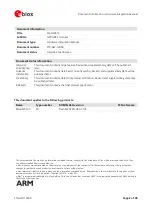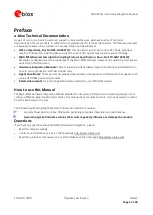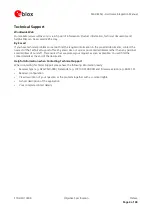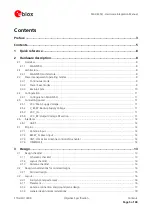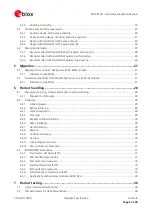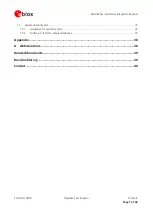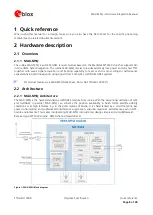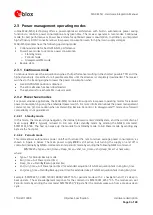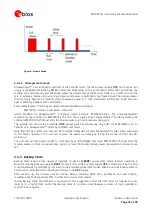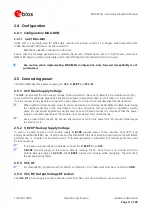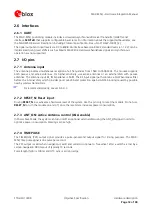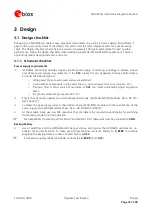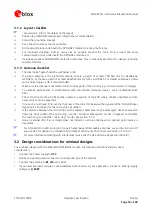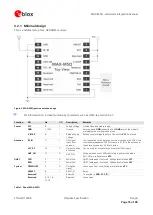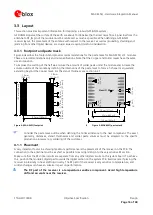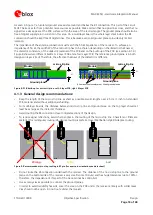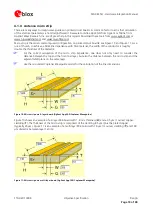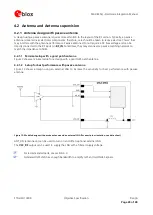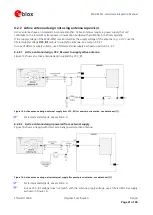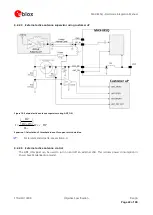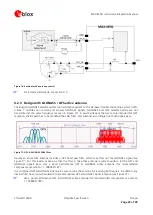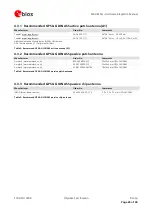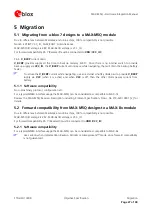
MAX-M5Q - Hardware Integration Manual
FTX-HW-13008
Objective Specification
Hardware description
Page 12 of 40
2.6
Interfaces
2.6.1
UART
The MAX-M5Q positioning module includes a Universal Asynchronous Receiver Transmitter (UART) serial
interface
RxD/TxD
that supports configurable baud rates. For information about the supported baud rates, see
the MAX-M5Q Receiver Description including Protocol Specification, Docu. No FTX-SW-13001 [2].
The signal output and input levels are 0 V to
VCC
. An interface based on RS232 standard levels (+/- 12 V) can be
implemented using level shifters such as Maxim MAX3232. Hardware handshake signals and synchronous
operation are not supported.
2.7
I/O pins
2.7.1
Antenna input
The antenna provides simultaneous reception of all frequencies from 1560 to 1606 MHz. The module supports
both passive and active antennas. For higher sensitivity, use active antennas or an external LNA with passive
antennas. The antenna input RF_IN impedance is 50
Ω
. The RF input signal path contains a SAW band-pass filter
before the internal LNA, which provides good out-of-band protection against GNSS blocking caused by possible
nearby wireless transmitters.
For recommended parts, see section 4.3.
2.7.2
RESET_N: Reset input
Driving
RESET_N
low activates a hardware reset of the system. Use this pin only to reset the module. Do not use
RESET_N
to turn the module on and off, since the reset state increases power consumption.
2.7.3
ANT_ON: Active Antenna control (LNA enable)
In Power Save Mode, the system can turn on/off an optional external LNA using the ANT_ON signal in order to
optimize power consumption. Polarity is active high.
2.7.4
TIMEPULSE
The TIMEPULSE (PPS) output signal provides a pulse-per-second output signal for timing purposes. The MAX-
M5Q time pulse signal is one pulse per second.
The PPS output is valid when navigation is valid and will also continue to ‘freewheel’ after a valid fix is lost by a
certain navigation DR timeout of typically 10 seconds.
Pulse length (high) is 100ms and UTC sync is at rising edge.


